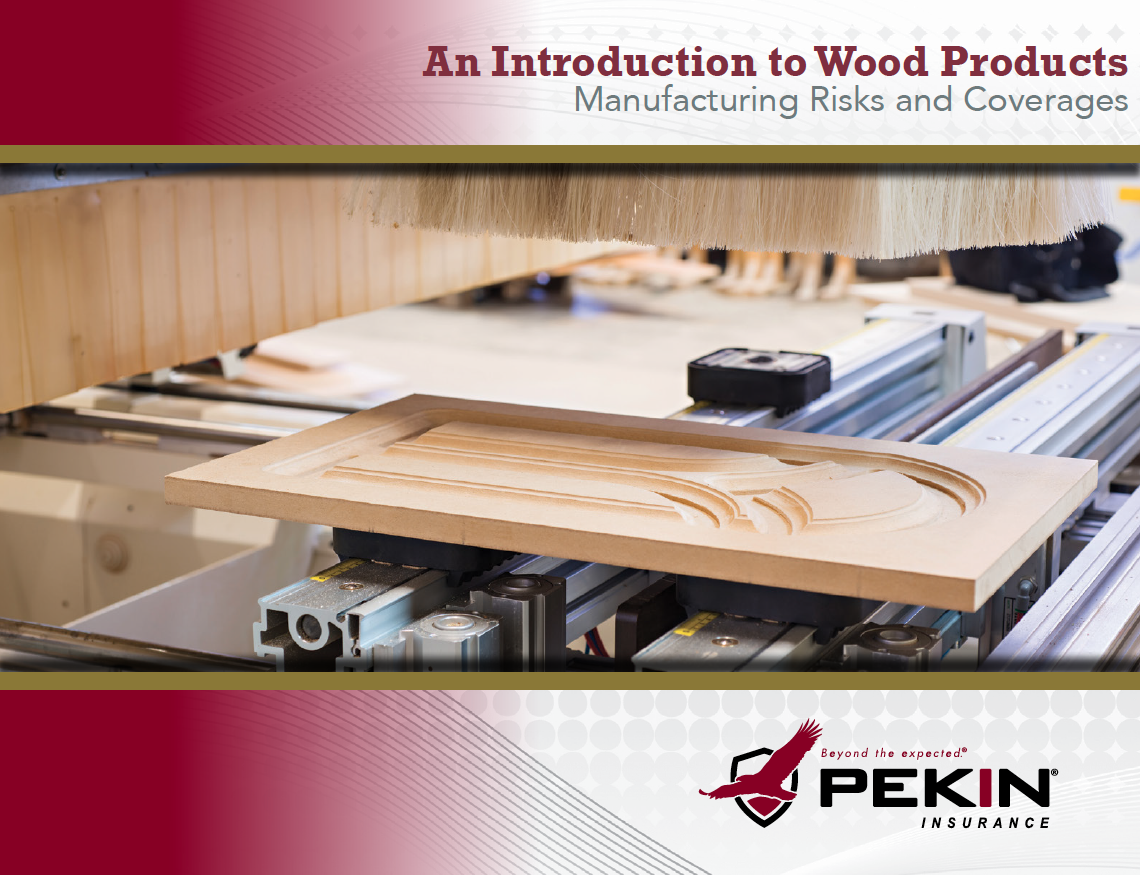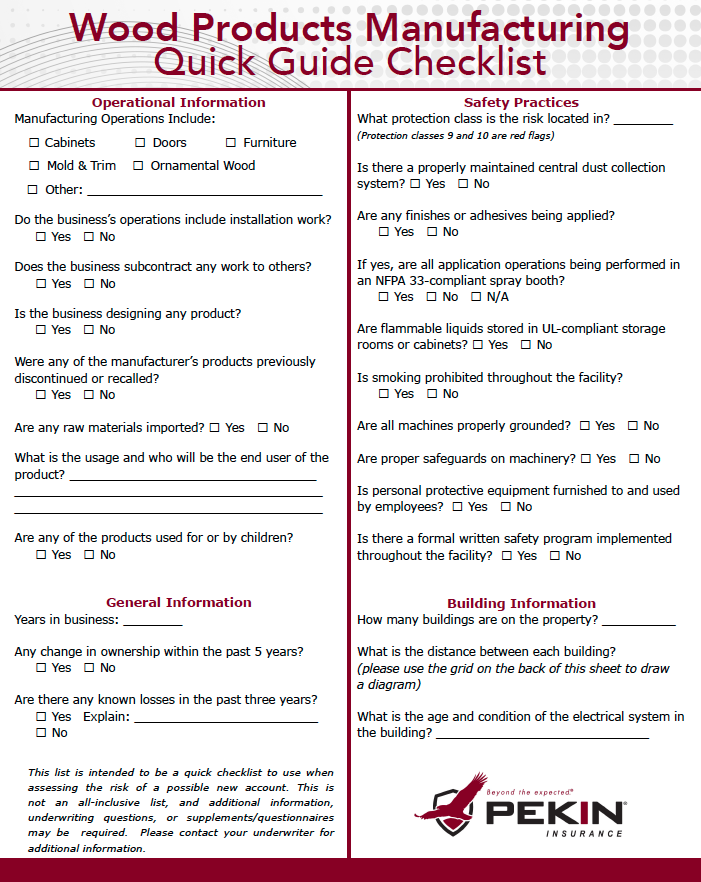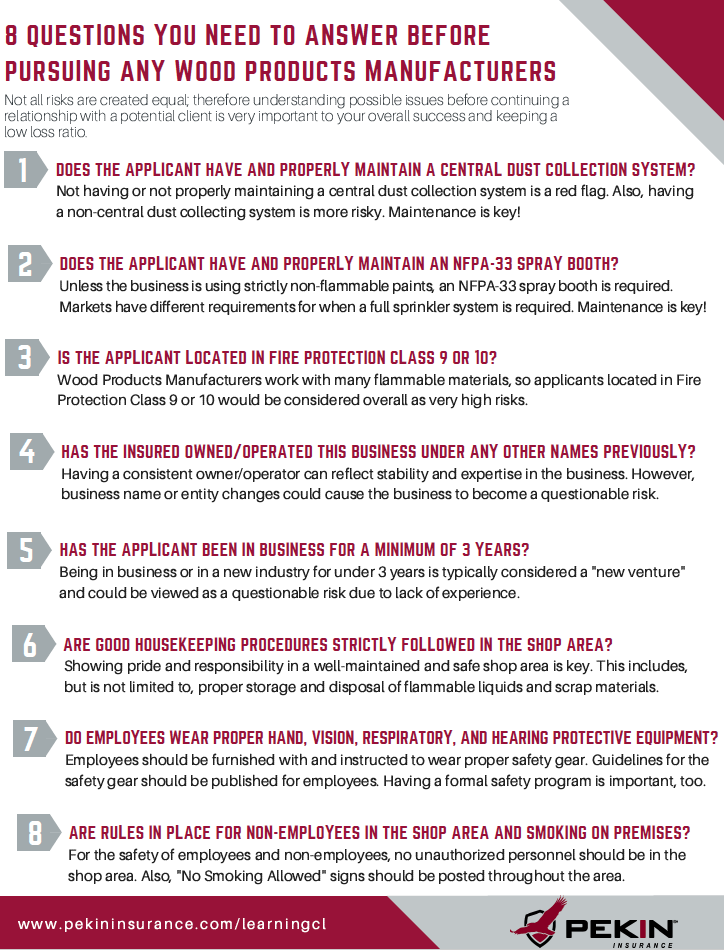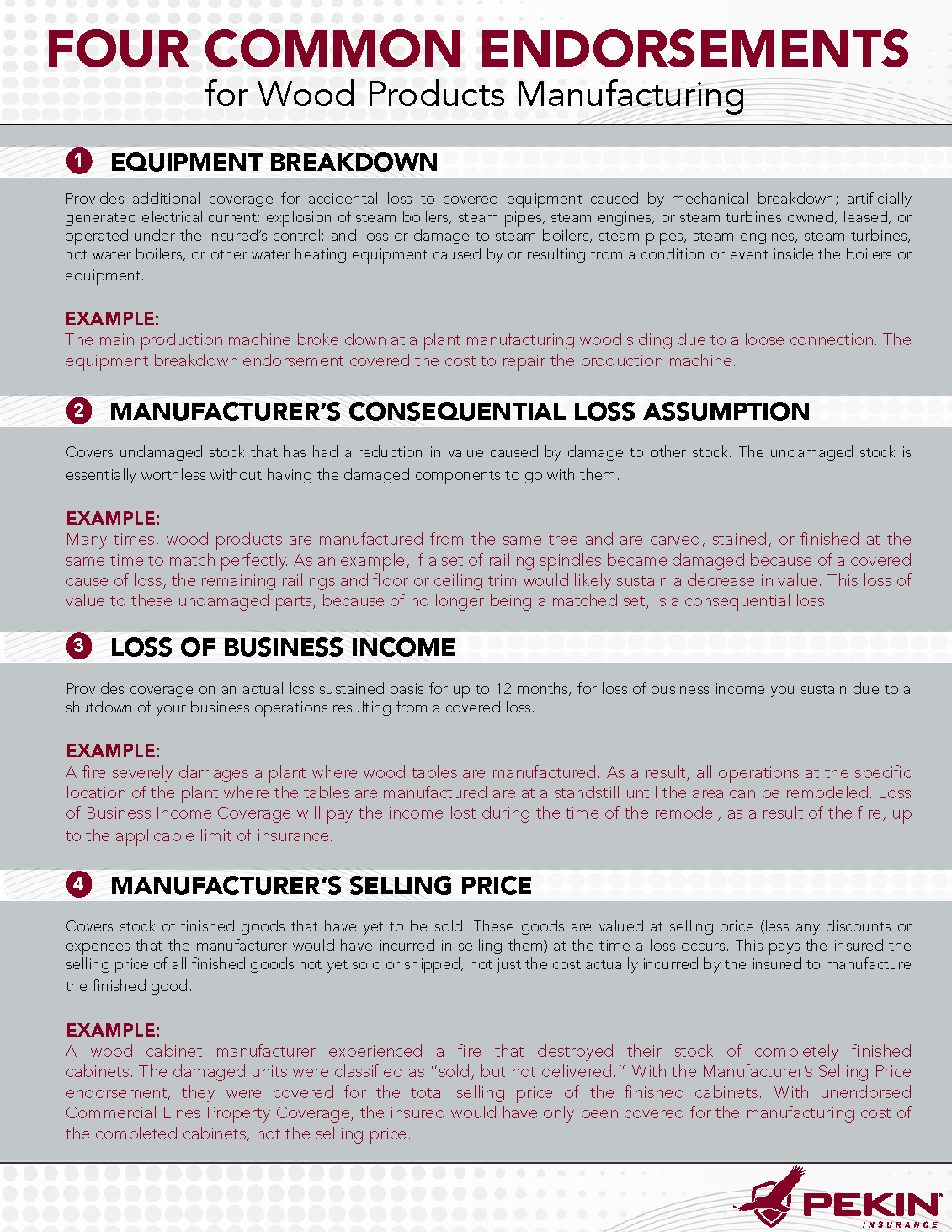When working with wood products manufacturing clients, it is important to understand the risks associated with their trade and how you can help them mitigate those risks. This blog post focuses on risks associated with the safe handling of chemicals used in manufacturing wood products.
Finishing operations during the wood product manufacturing process could include lacquers, varnishes, adhesives, waxes, paints, and other chemicals used for finishes and coatings. These chemicals impact the health of workers, causing headaches, nausea, dizziness, and the possibility of skin and respiratory diseases. Chemicals can enter the body in three ways: through inhalation (breathing), ingestion (eating), or contact with the skin. Woodworkers are generally exposed to chemicals through inhalation and contact with the skin.
Below are a few key considerations for safe handling of chemicals throughout the wood products manufacturing process:
Training:
Having a plan and proper training in place to protect workers from hazardous workplace chemicals is extremely important. Workers should be trained on proper storage, use, and labeling of stains, varnishes, adhesives, paints, and other chemicals.
Good Housekeeping:
- Ensure the use of proper spray booths, including an NFPA-33 booth, when applying stains, varnishes, or adhesives.
- Store flammable and combustible liquids in UL-compliant storage rooms or cabinets.
- Segregate combustible and flammable materials such as lumber stock and chemical solvents from each other and from ignition sources.
- Dispense flammable and combustible liquids by an approved pump or self-closing faucet with a metal catch pan for drippings.
- Bond and ground all drums and containers being filled to control static electricity.
Personal Protective Equipment (PPE):
The term "personal protective equipment" refers to equipment worn to minimize exposure to hazards that cause workplace injuries and illnesses.
- Eye Protection: Protective eyewear helps guard against paint splashes and other chemical hazards. OSHA requires that all protective eyewear used in the woodworking industry meet the specifications of the American National Standards Institute.
- Hands and Arms Protection: Workers’ hands and arms need protection from burns and exposure to the chemicals used in finishing wood products. The use of long, chemically resistant, protective gloves should be mandatory to prevent absorption of chemicals through the skin.
- Body Protection: For chemical splash protection—whether from paints, finishes, adhesives, solvents, or other material—use aprons or full-body suits constructed of chemically resistant material.
- Respiratory Protection: Respiratory protection may be necessary for workers who routinely handle wood finishes, adhesives, solvents, or other chemicals which are open to the air they breathe. Respiratory protection is required when working in paint spray booths (or booths where other chemicals are sprayed).
Safe handling of chemicals is only one common risk mitigation tool associated with wood products manufacturing. Be sure to evaluate a business’s operations entirely as each business will deal with risk mitigation differently.
Source: osha.gov
Note: The writings of Pekin Insurance are intended to be used for educational purposes only as well as to give you general information and an understanding of insurance. Pekin Insurance is not held to the accuracy or completeness of any information on this site or that is found by following any link on this site. Please refer to the policy, the specific coverage forms, and the endorsements for a detailed description of the coverages, limitations, and exclusions that apply. Each coverage scenario and policy are unique, so examples written by Pekin Insurance are not guaranteed.




